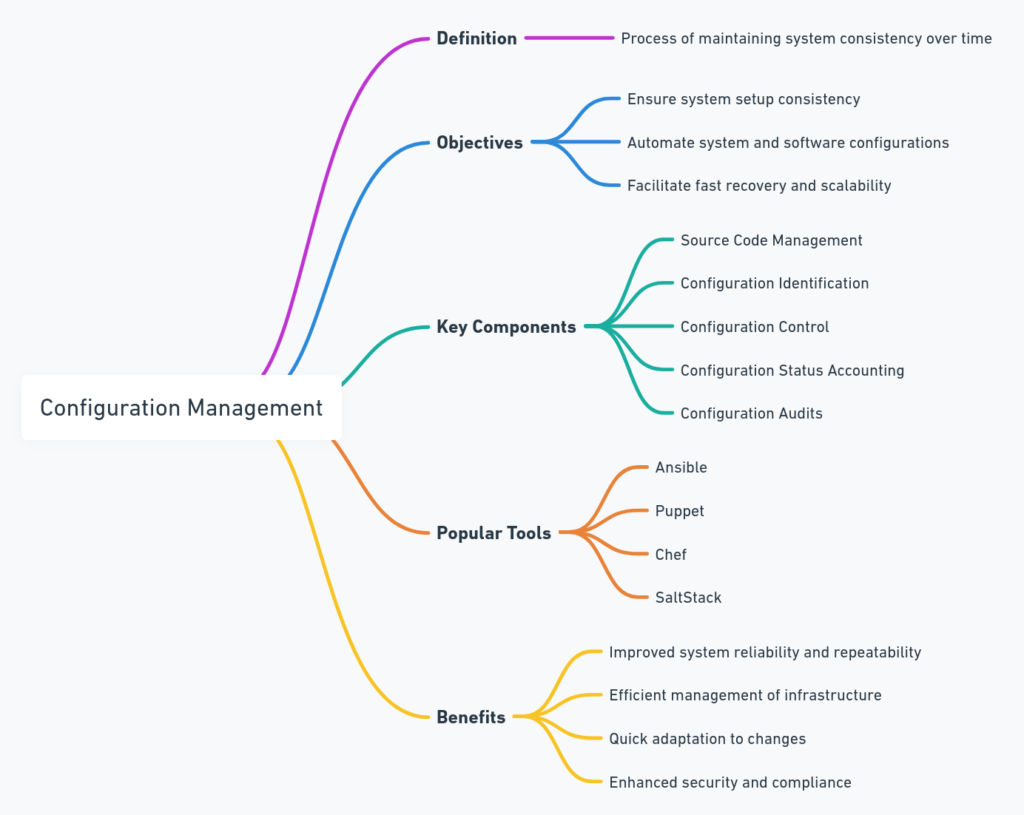Unlock the Power of Configuration Management
In today’s fast-paced IT environments, Configuration Management emerges as a critical component for ensuring systems operate smoothly and efficiently. Importantly, by adopting Configuration Management practices, organizations not only achieve higher operational reliability but also ensure quicker recovery from disruptions.

Configuration Management: The Backbone of IT Operations
Tracking and controlling changes in software and hardware across an organization’s network, Configuration Management ensures systems are known, reliable, and trusted. Additionally, it provides a comprehensive inventory of all IT assets and manages changes to these assets, thereby preventing inconsistencies and potential failures.
Why Configuration Management is Essential
Moreover, implementing Configuration Management strategies allows businesses to maintain control over their IT environments. This control leads to improved system stability, compliance with regulatory standards, and lays a solid foundation for scaling IT operations. Also, Configuration Management simplifies the deployment of new software and hardware, significantly enhancing overall productivity.
Configuration Management Tools and Practices
A variety of tools, including popular options like Ansible, Chef, Puppet, and Terraform, facilitate effective Configuration Management. These tools automate the process of configuring and maintaining computers, servers, and other devices in a network, dramatically reducing the potential for human error and ensuring configurations are consistent across the board.
Benefits of Configuration Management
The advantages of Configuration Management are manifold. Not only does it reduce downtime by ensuring that all systems are configured correctly, but it also streamlines the process of recovering data and services after an outage. Equally, Configuration Management supports security protocols by keeping software up to date and managing access controls effectively.
Configuration Management in DevOps
Furthermore, in the realm of DevOps, Configuration Management plays a pivotal role. It bridges the gap between development and operations teams by automating the deployment and scaling of applications. Consequently, this automation permits more frequent updates and releases, thereby driving innovation and improving customer satisfaction.
Best Practices for Configuration Management
Adopting best practices, such as maintaining a detailed configuration management database (CMDB), automating configuration tasks, and regularly auditing systems to ensure compliance with desired configurations, maximizes the effectiveness of Configuration Management. These practices are instrumental in minimizing risks and optimizing IT operations.
Configuration Management: A Path to Digital Transformation
Indeed, embracing Configuration Management marks a step towards digital transformation. It enables organizations to manage their IT infrastructure more efficiently, adapt to changes quickly, and deliver higher quality services. As businesses continue to evolve, Configuration Management will undeniably remain a key factor in achieving operational excellence and competitive advantage.
Embrace Configuration Management for IT Excellence
To sum up, Configuration Management is indispensable for modern IT operations. It not only enhances system reliability and improves efficiency but also supports continuous improvement. Prioritizing Configuration Management allows organizations to effectively navigate the complexities of today’s digital landscape and paves the way for future innovation.